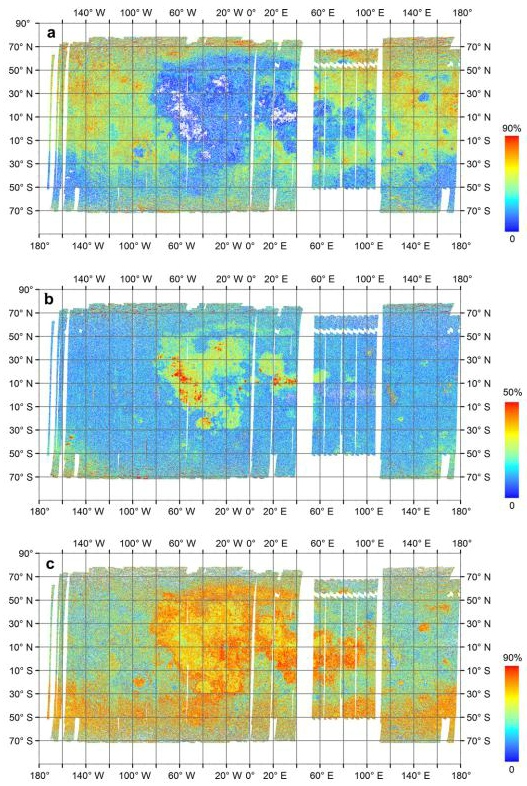Mapping global lunar abundance of plagioclase, clinopyroxene and olivine with Interference Imaging Spectrometer hyperspectral data considering space weathering effect
Mineral mapping of the lunar surface is critical to understanding the Moon’s geological diversity and history, yet the global lunar abundance of minerals has not been mapped using hyperspectral data. The Interference Imaging Spectrometer (IIM) of Chang’E-1 mission obtained hyperspectral data of the global lunar surface within the wavelength of 480–960 nm in which major minerals can be discriminated by faint differences in 32 contiguous hyperspectral bands. The effect of space weathering produces multiple endmembers of lunar minerals by obscuring the pure spectra of minerals in different levels. In this study, the distributions of plagioclase, clinopyroxene and olivine on the global lunar surface were mapped with IIM hyperspectral data based on the modified Multiple Endmember Spectral Mixture Analysis (MESMA) method considering the space weathering effect. The distribution of lunar space weathering levels was retrieved as a byproduct of mineral mapping. The mineral mapping results were compared with recent mapping results. Although the wavelength of IIM is limited, it shows that our results are basically consistent with the recent research at both global and local scales. The distribution of space weathering levels is also consistent with the map of optical maturity parameter (OMAT) in most parts of the global lunar surface, especially in the highlands. This study demonstrates that the modified MESMA method is an effective approach to quantitative mapping of the lunar minerals and space weathering levels using hyperspectral data. In the future, more minerals can be mapped with higher accuracy if hyperspectral data with a wider spectral range are used based on the method proposed in this study.

Fig. Mineral abundance distribution of the global lunar surface (a: plagioclase; b: clinopyroxene; c: olivine).
Reference:
Tong Shuai,Xia Zhang *, Lifu Zhang, Jinnian Wang. Mapping Global Lunar Abundance of Plagioclase, Clinopyroxene and Olivine with Interference Imaging Spectrometer Hyperspectral Data Considering Space Weathering Effect,ICARUS, 2013, 222: 401–410.
